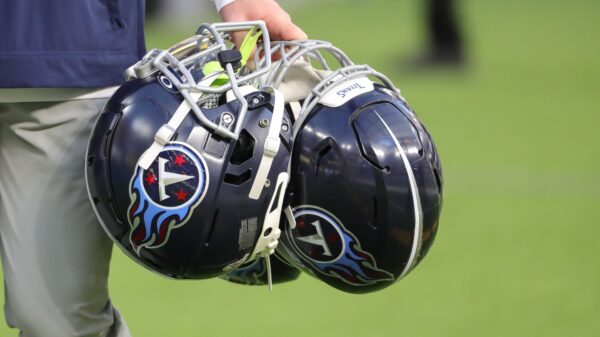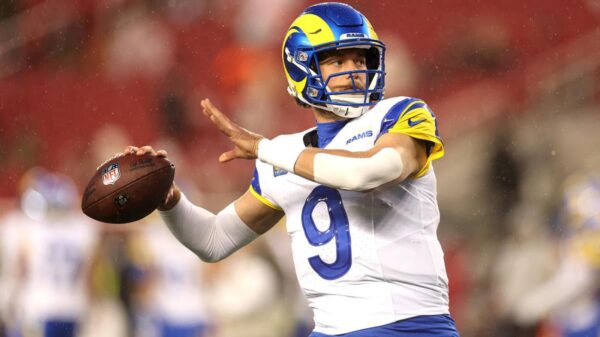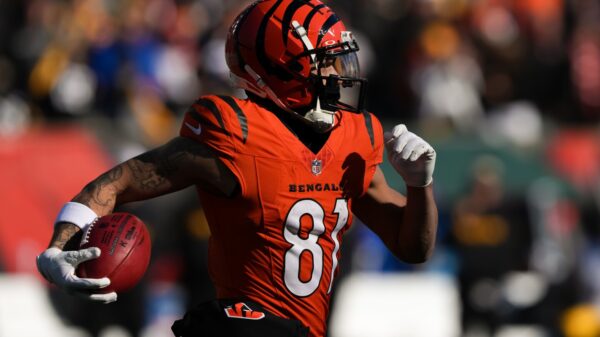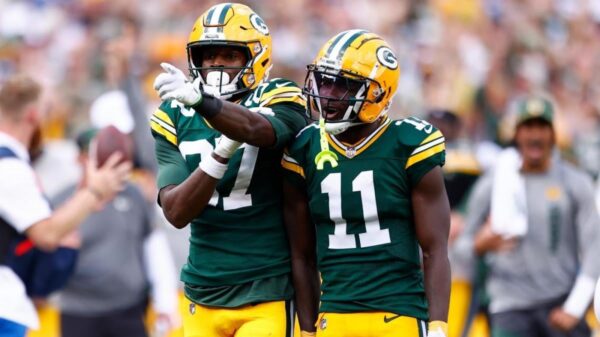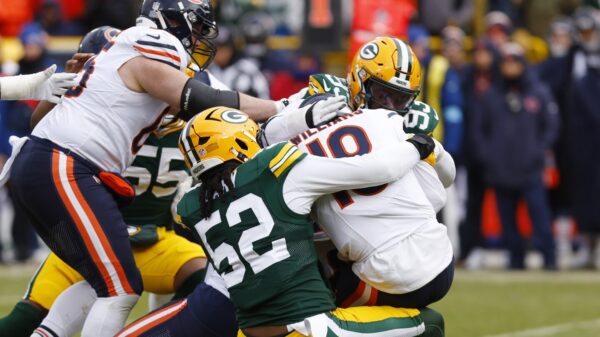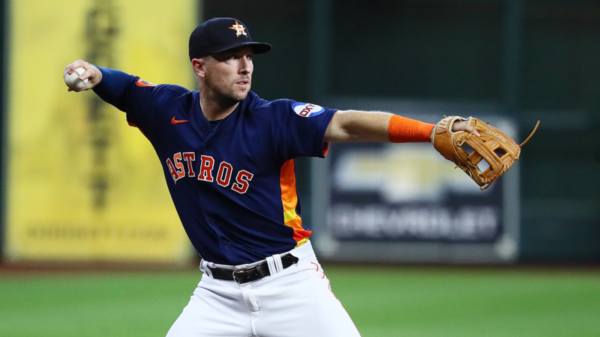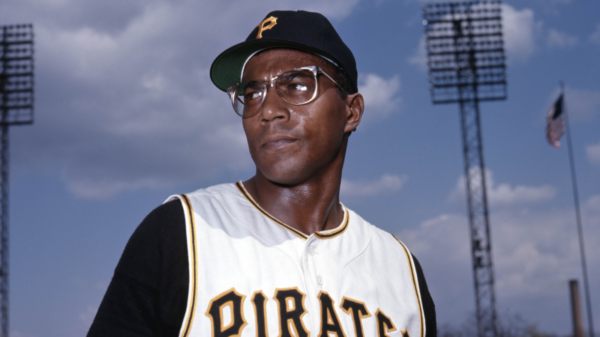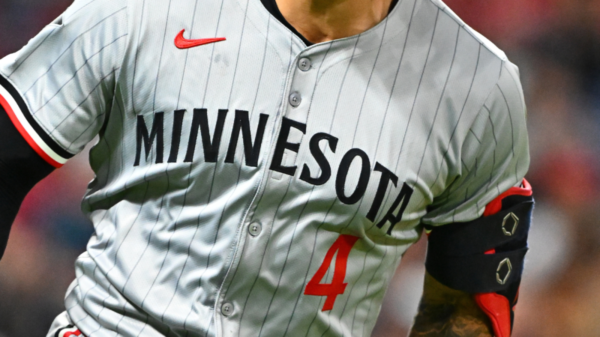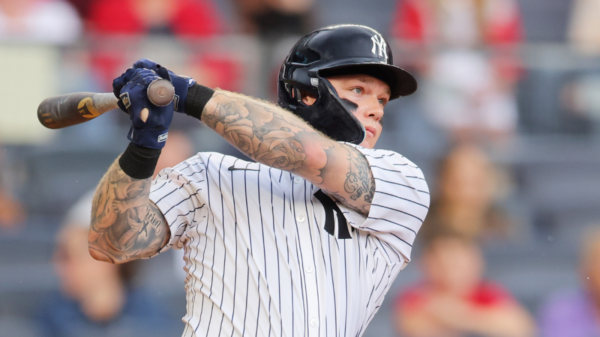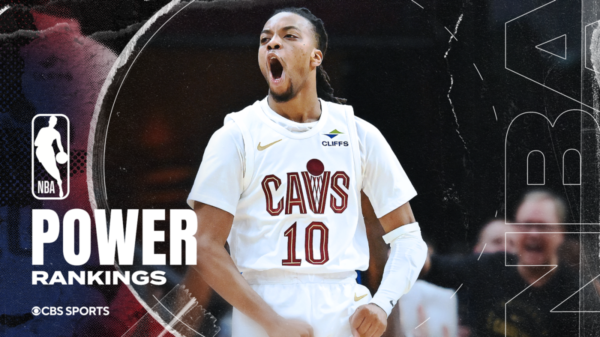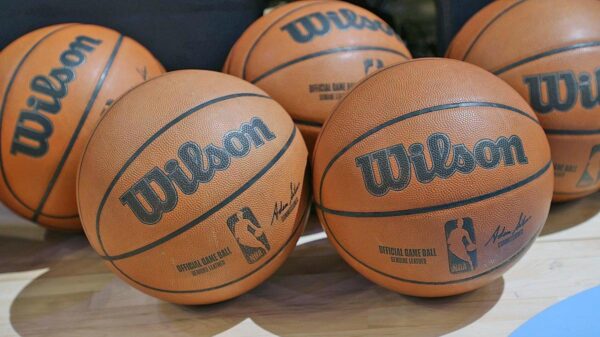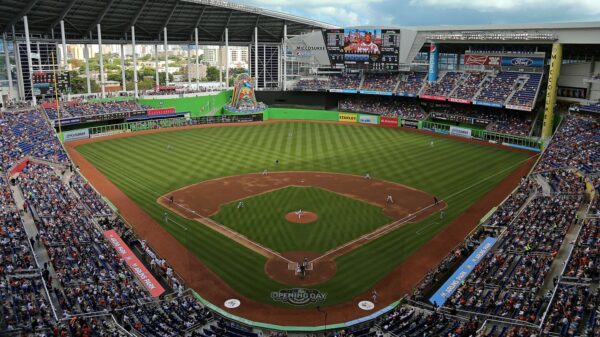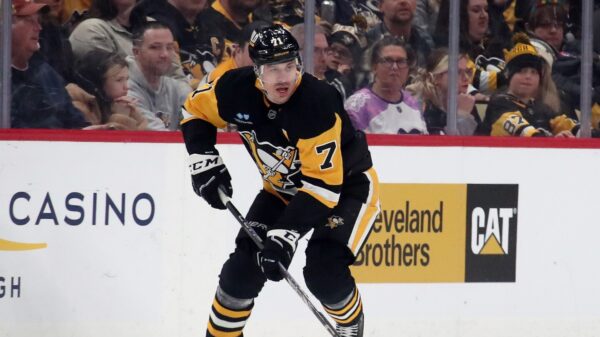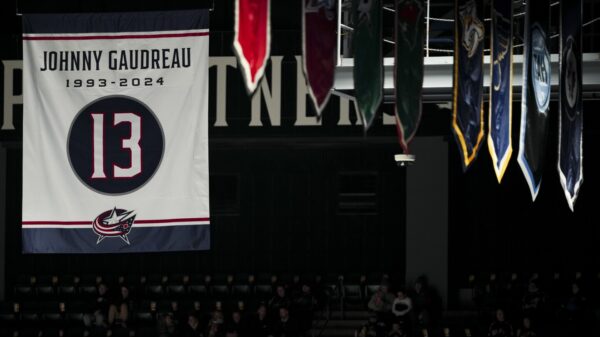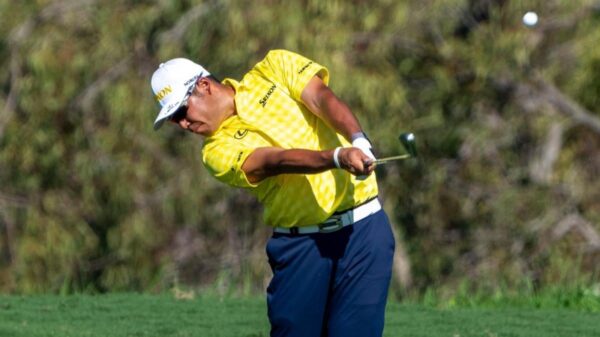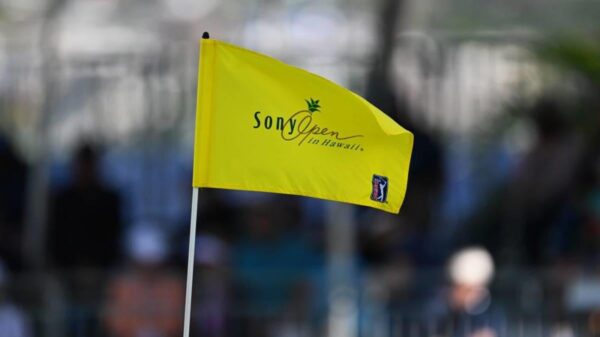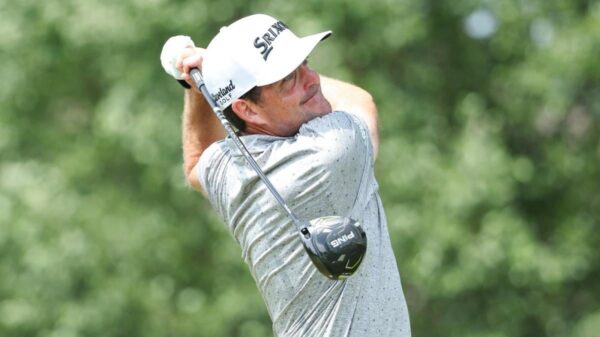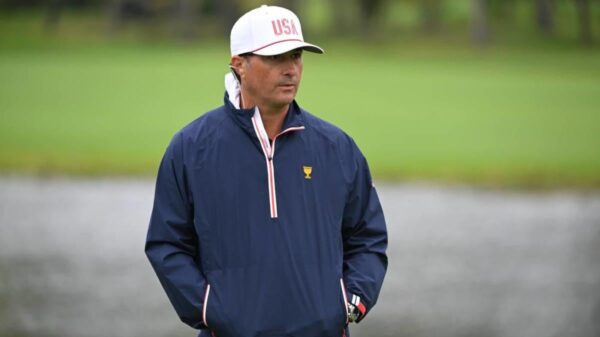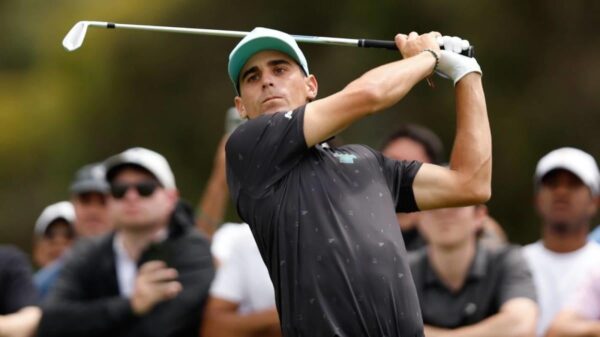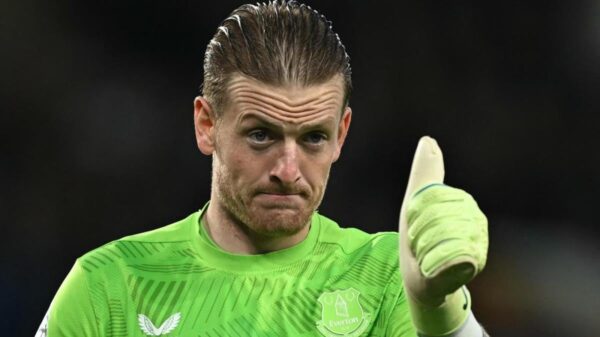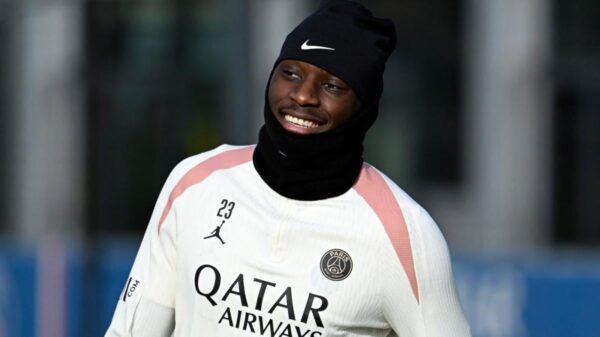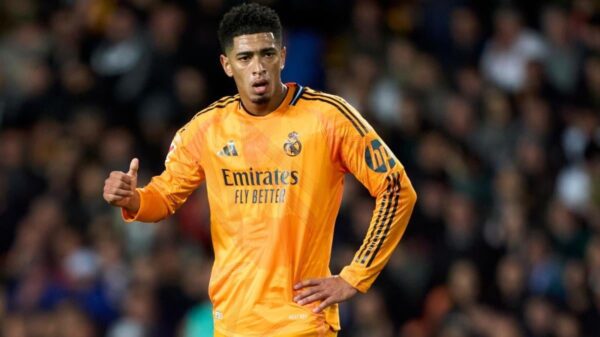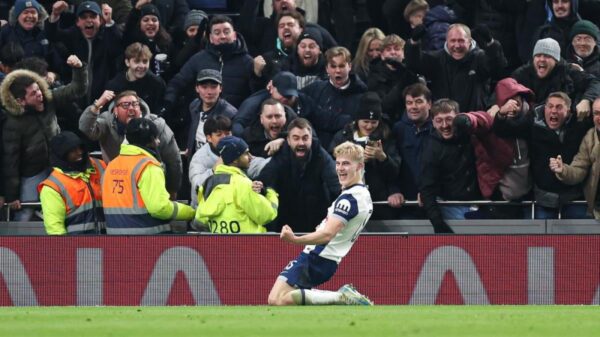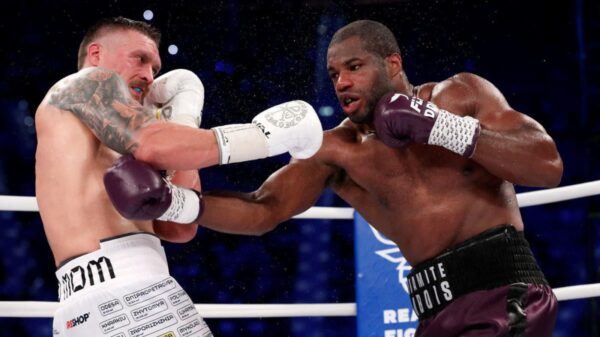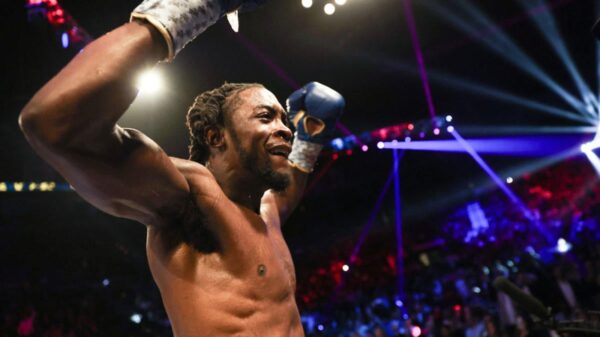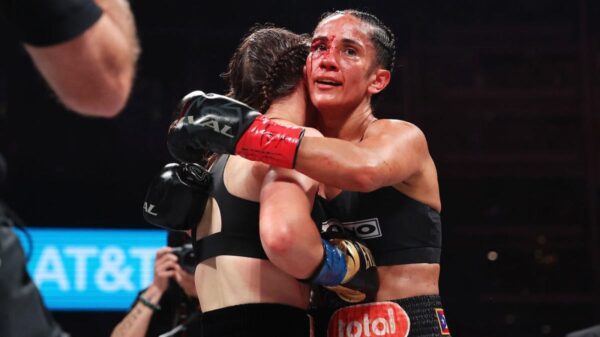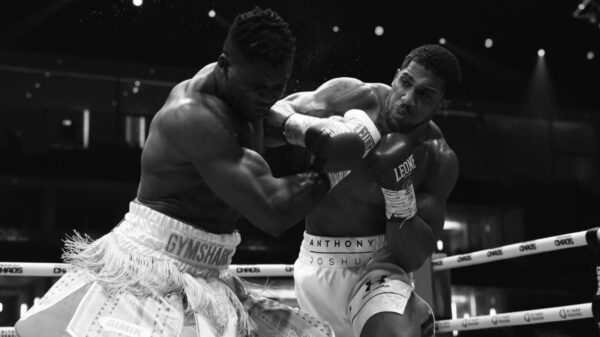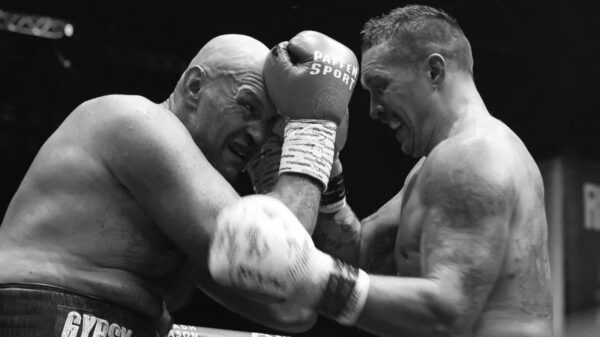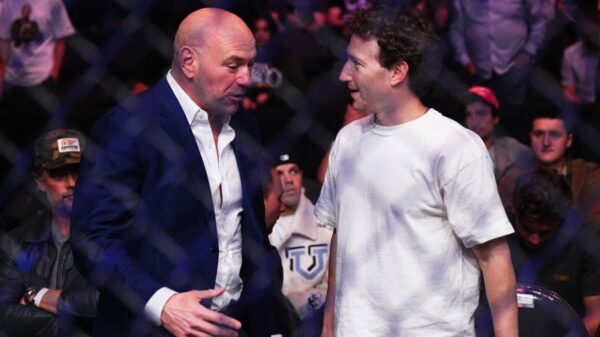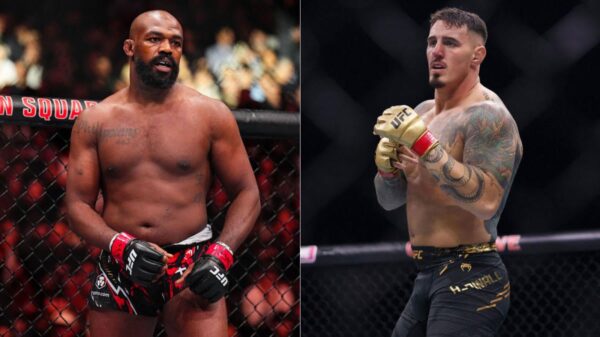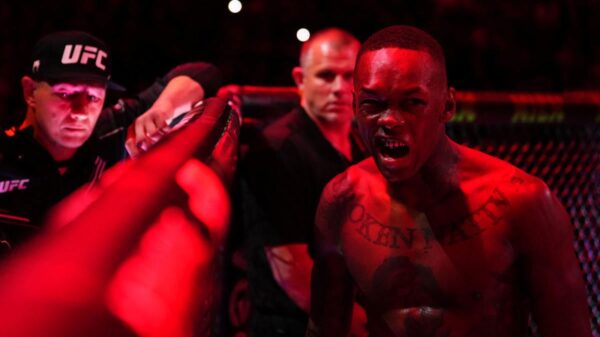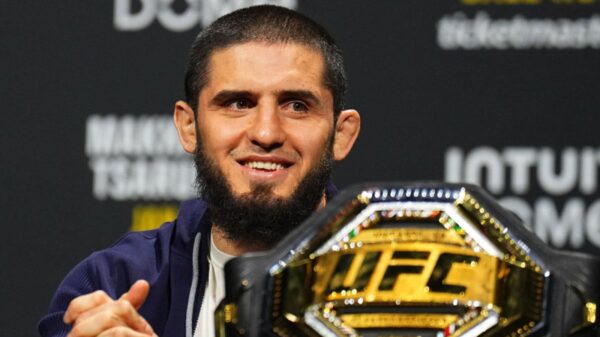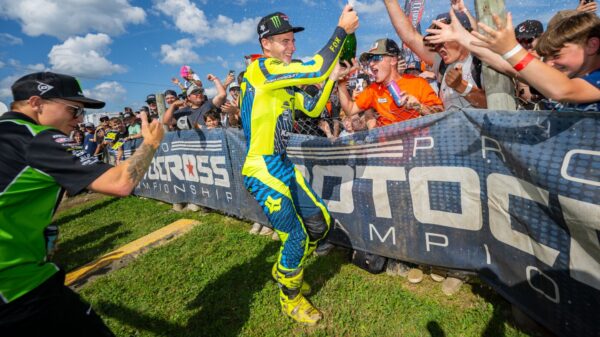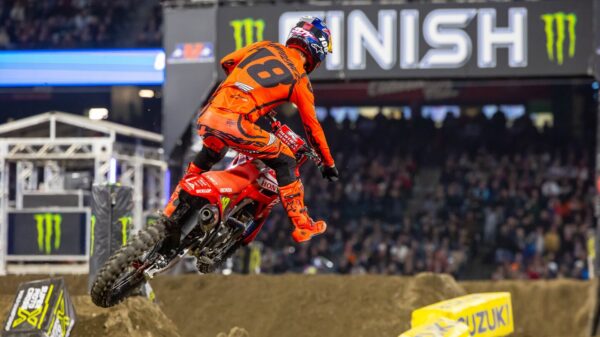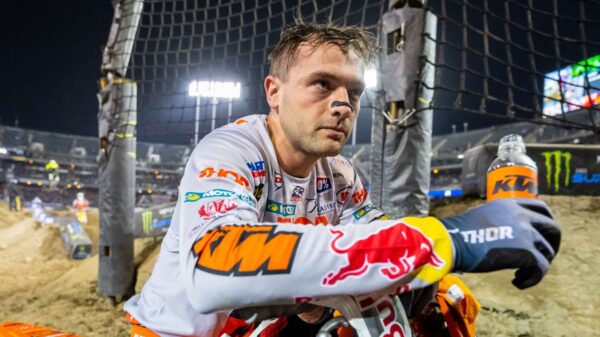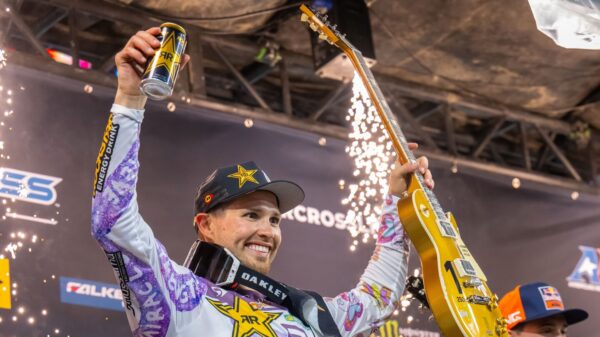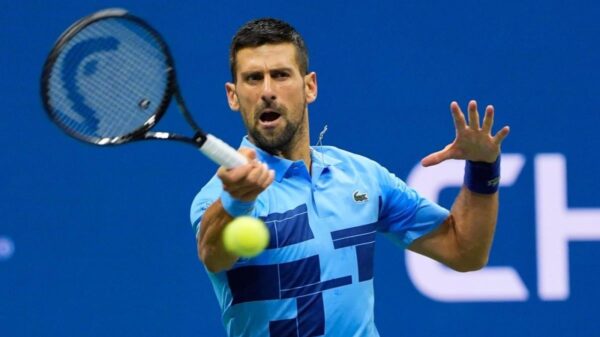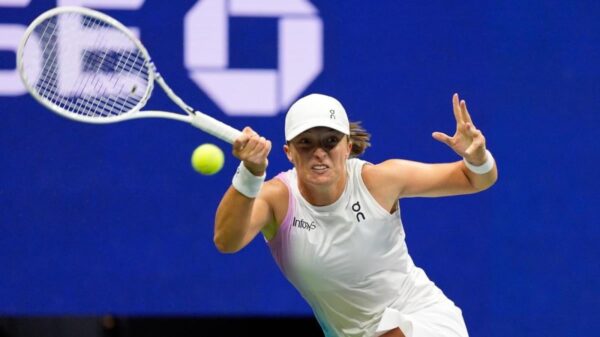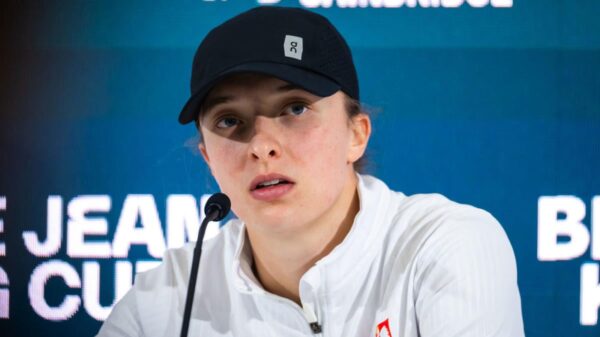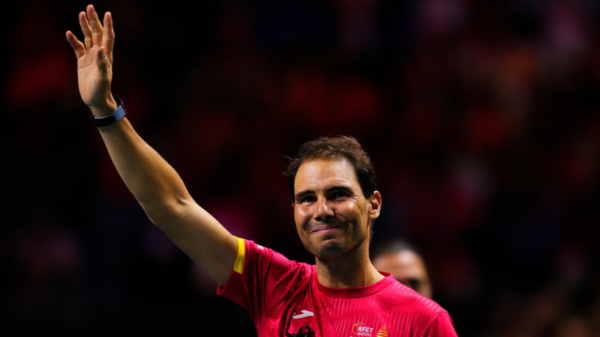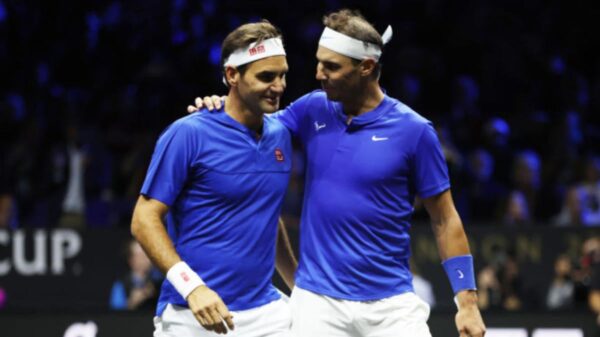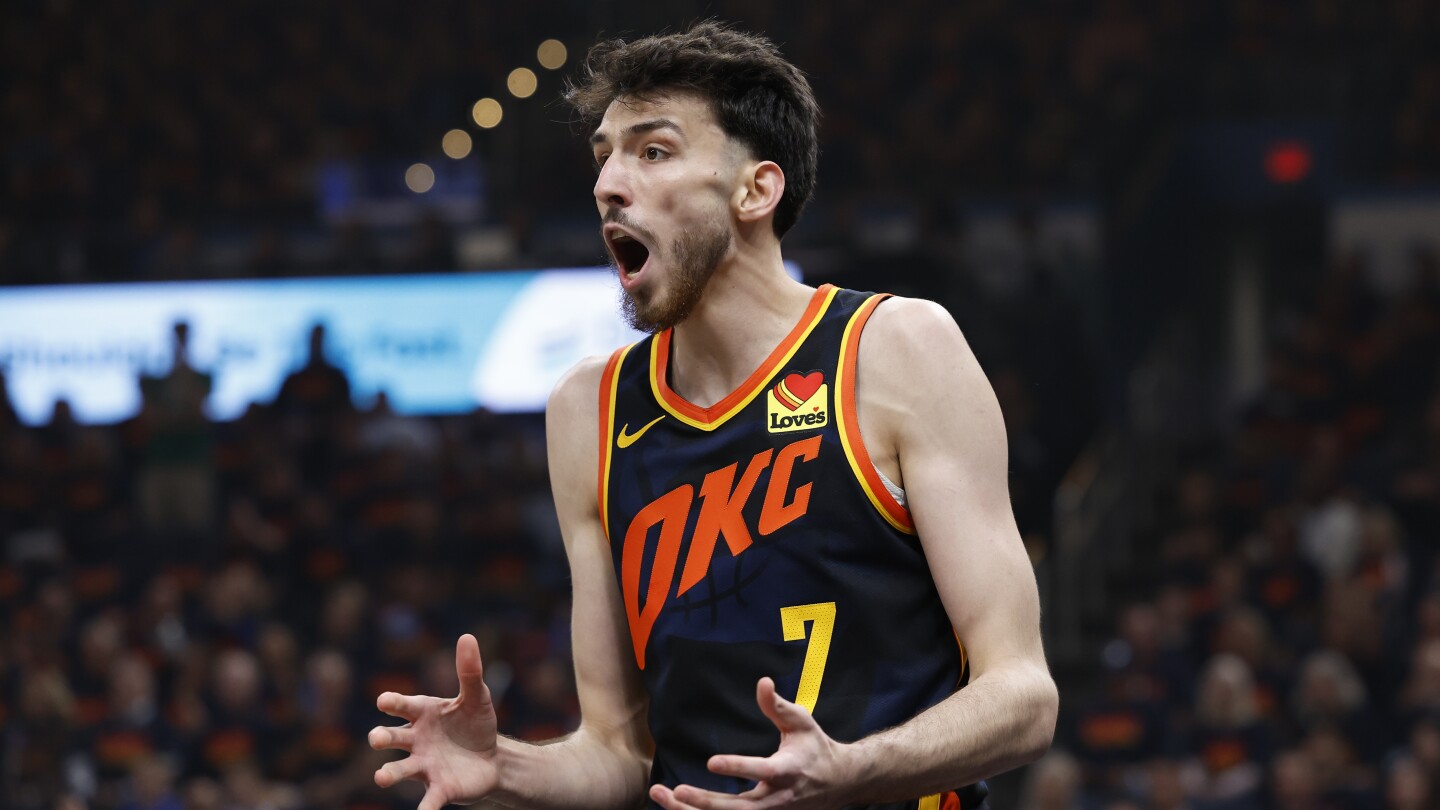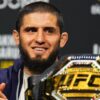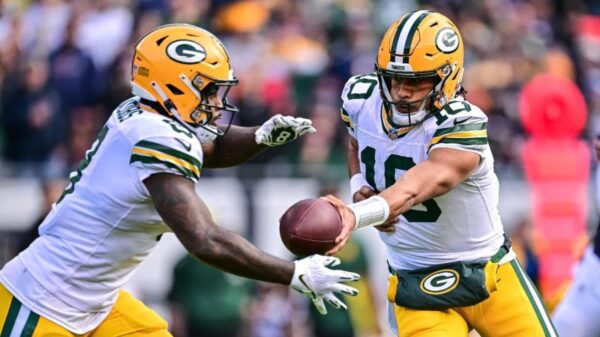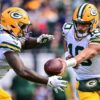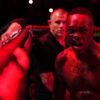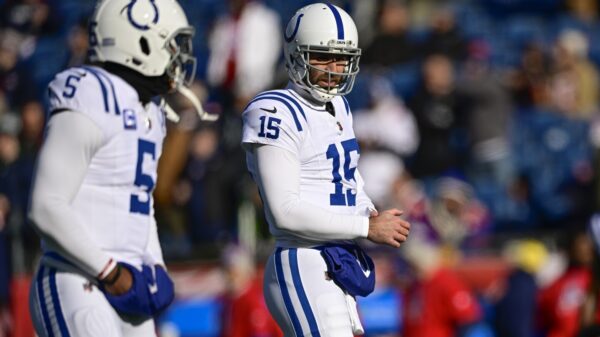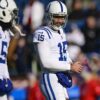By Raphielle Johnson
“The best thing about freshmen is that they become sophomores.”
Those were the words of the late, great Al McGuire. While his comment pertained to college basketball, that can also be said for the NBA. While we’ve seen rookies enter the league and take it by storm with little to no delay, most are better equipped to compete (and provide fantasy value) with a season under their belt. Of the players who entered last season with one year of NBA experience, only one, Oklahoma City’s Jalen Williams, provided top-50 per-game value in 9-cat formats. Some players could claim top 100 status, including Jalen Duren (Detroit), Walker Kessler (Utah), Keegan Murray (Sacramento), and Jabari Smith Jr., while Orlando’s Paolo Banchero was more valuable in roto formats.
With that in mind, we look to the 2024-25 “sophomores,” a group led by Victor Wembanyama and Chet Holmgren. Below is a team-by-team look at each group of second-year players and what fantasy managers can expect from them regarding value.
Atlanta: Kobe Bufkin, Mouhamed Gueye, Seth Lundy
The 15th overall pick in the 2023 draft, Bufkin only appeared in 17 NBA games as a rookie. In those appearances, the Hawks guard averaged 4.8 points, 1.9 rebounds, 1.6 assists, 0.4 steals, and 0.5 3-pointers in 11.5 minutes, shooting 37.0% from the field and 50.0% from the foul line. While those numbers don’t jump off the page, Bufkin’s G League production has likely sparked optimism in Atlanta. In 14 games with College Park, he accounted for 23.6 points, 5.4 rebounds, 5.9 assists, 1.3 steals, and 2.6 3-pointers, shooting 44.6% from the field and 82.9% from the foul line. With Dejounte Murray’s exit, there are point guard minutes to fill behind Trae Young. Can Bufkin be that guy? He should have the opportunity to earn additional minutes, but Bufkin’s a better option for dynasty leagues than redrafts this season.
As for Gueye and Lundy, they’re unlikely to land on the fantasy radar. The former had a big day in Atlanta’s regular-season finale, going for 19 points, nine rebounds, and three blocked shots, but that was also Gueye’s most extensive NBA action of the season. With Clint Capela and Onyeka Okongwu still in the fold and the Hawks adding Larry Nance Jr. and Cody Zeller during the offseason, there isn’t much room for Gueye to make an impact. On a two-way contract, Lundy appeared in nine games for the Hawks as a rookie.
Boston: Drew Peterson, Jordan Walsh
Given how experienced Boston’s roster was as the franchise’s chase for an 18th NBA title, it’s unsurprising that neither Peterson nor Walsh had much of an impact last season. Selected with the 38th overall pick, Walsh (whose draft rights were acquired from the Kings) only played in nine games for the Celtics. He played most of his professional minutes in the G League, appearing in 27 regular season games for Maine and averaging 14.7 points, 7.4 rebounds, 1.2 assists, 1.0 steals, 0.7 blocks, and 2.1 3-pointers in 29.7 minutes. Walsh has the length and athleticism needed to be a defensive pest on the wing, but he’s in a difficult spot regarding playing time. Maybe the occasional streaming opportunity comes about during the season, but he is not someone who needs to be drafted in non-dynasty leagues.
Peterson, who was signed to a two-way deal after going undrafted out of USC, only appeared in three games for the Celtics last season. In the G League, he began the season in Sioux Falls after being waived by Miami in mid-October, with Boston inking him to a two-way deal in mid-December. In 34 regular season games with Maine, Peterson averaged 16.1 points, 7.4 rebounds, 5.6 assists, 1.1 steals, 0.9 blocks, and 2.2 3-pointers in 35.4 minutes, shooting 45.9% from the field and 81.5% from the foul line. Peterson remains on a two-way deal for 2024-25, and his role within the Celtics rotation is unlikely to change.
Brooklyn: Noah Clowney, Dariq Whitehead, Jalen Wilson
Of the three Nets sophomores, Clowney has sparked the most intrigue in early drafts. Brooklyn pivoted to a rebuild this offseason, and while the two did not play the same position, Mikal Bridges’ exit could result in some shifting that gets Clowney additional opportunities to show what he can do. The first-round pick out of Alabama played in 23 games for the Nets last season, with his minutes increasing over the final month. In the final 13 games of the season, Clowney averaged 8.0 points, 5.0 rebounds, 0.5 steals, 1.2 blocks, and 0.8 3-pointers in 21.8 minutes, shooting 52.7% from the field and 62.5% from the foul line. His ability to step away from the basket offers a counter to Nic Claxton and Day’Ron Sharpe, who do their offensive work in the paint. Even with Ben Simmons reportedly healthy ahead of training camp and Dorian Finney-Smith still on the roster, Clowney may be worth a late-round dart throw, especially in deeper leagues.
Wilson played most of the Nets rookies last season, appearing in 43 games (three starts). Selected with the 51st overall pick, the former Kansas standout averaged 5.0 points, 3.0 rebounds, 1.0 assists, and 0.6 3-pointers in 15.4 minutes, shooting 42.5% from the field and 82.6% from the foul line. While the free-throw percentage is promising concerning Wilson’s ability to improve as a perimeter shooter, he only averaged 1.1 attempts per game. Wilson had his moments, most notably going for 21 points and 10 rebounds in a December 27 loss to the Bucks, but the overall fantasy value wasn’t there. While the Bridges trade will also affect him, Wilson’s fantasy prospects aren’t as promising as Clowney’s.
Last but not least is Whitehead, who underwent a second foot surgery last June and only appeared in two games for the Nets as a rookie (he played 17 for the team’s G League affiliate). Whitehead underwent shin surgery in late January but was able to participate in Summer League action in Las Vegas. Given Brooklyn’s shift to a rebuild, he’s a young guard whose fantasy value could increase after the February trade deadline. Whitehead isn’t a draftable player in non-dynasty leagues, but keep him on your radar.
Charlotte: Brandon Miller, Nick Smith Jr.
While there were no questions about who should be the first overall pick in the 2023 NBA Draft, that was not the case for the Hornets at No. 2. Some believed Scoot Henderson should be the pick, even with LaMelo Ball on the roster. Charlotte went in a different direction, selecting Miller, and the choice paid off in 2023-24. The 6-foot-9 wing finished third in Rookie of the Year voting after averaging 17.3 points, 4.3 rebounds, 2.4 assists, 0.9 steals, 0.6 blocks, and 2.5 3-pointers in 32.2 minutes.
Shooting 44.0% from the field and 82.7% from the foul line, Miller finished just outside the top 100 in per-game fantasy value and just inside that threshold in totals. With a healthy Ball and Mark Williams in the rotation, Miller’s scoring output may decrease slightly this season. However, his offensive skill set is such that there should not be much concern for fantasy managers.
As for Smith, he appeared in 51 games and posted averages of 5.9 points, 1.4 rebounds, 1.2 assists, and 1.2 3-pointers in 14.3 minutes while shooting 39.1% from the field and 86.7% from the foul line. The concern heading into 2024-25 is that Smith didn’t offer much value after the trade deadline, and new additions Tre Mann and Vasilije Micic also factored into the equation. There isn’t much reason to consider selecting Smith in redraft leagues.
Chicago: Julian Phillips, Adama Sanogo
A second-round pick out of Tennessee, Phillips played 40 games for the Bulls as a rookie. He didn’t offer much production, averaging 2.2 points, 0.9 rebounds, 0.3 assists, and 0.3 3-pointers in 8.1 minutes per game, shooting 41.6% from the field and 68.4% from the foul line. A lingering question for Phillips is whether or not the Bulls will truly rebuild or attempt to stay afloat in hopes of earning a Play-In tournament spot as in seasons past.
If the answer is the former, Phillips should see increased opportunities. But even that isn’t straightforward, as Chicago used its lottery pick on Matas Buzelis. As for Sanogo, he remains on a two-way contract after seeing most of his playing time in the G League. While the Bulls lost Andre Drummond in free agency, offseason signing Jalen Smith will move into the backup center role.
Cleveland: Emoni Bates, Craig Porter Jr.
Due to the Donovan Mitchell trade, Cleveland did not have a first-round pick in the 2023 draft. Bates was their lone selection, and the 49th overall pick was not in a position to offer much value as a rookie. The 6-foot-10 small forward appeared in 15 NBA games, averaging 2.7 points, 0.9 rebounds, 0.7 assists, and 0.7 3-pointers in 8.9 minutes. The Cavaliers may not have boasted an impressive wing rotation, but there was enough talent to keep Bates out of the rotation. With Isaac Okoro agreeing to a new deal and veterans Max Strus, Caris LeVert, and Georges Niang in the fold, Bates’ place within the rotation is unlikely to change.
The one Cavaliers rookie who offered value was Porter, who stepped up when the team was forced to play without Mitchell and Darius Garland due to injury. While he only made six starts, Porter made 51 appearances as a rookie, accounting for 5.6 points, 2.1 rebounds, 2.3 assists, and 0.4 steals in 12.7 minutes, shooting 50.9% from the field and 73.2% from the foul line. He didn’t offer much defensive or 3-point value, but Porter was a decent deep-league streamer when asked to play extended minutes.
In the 12 games in which he played at least 20 minutes, Porter averaged 11.3 points, 4.6 rebounds, 5.2 assists, 0.8 steals, 0.8 blocks, and 0.6 3-pointers. There isn’t a reason to consider selecting him in drafts, as Porter’s value depends on the availability of Mitchell and Garland. But he should remain on the radar as a streamer.
Dallas: Dereck Lively II, Olivier-Maxence Prosper
Lively looked like a good fit in Dallas from the moment he was drafted (the Mavs acquired his draft rights from Oklahoma City), and that’s how things played out. Making his first start in Dallas’ second regular season game, Lively was a fixture in the lineup as the starting five until injuries led to three separate stints of at least four games on the sideline before the February trade deadline. The Mavericks acquired Daniel Gafford at that point, and he would eventually move into the starting five, with Lively coming off the bench.
Lively played 51 regular season games, averaging 8.8 points, 6.9 rebounds, 1.1 assists, 0.7 steals, and 1.4 blocks in 23.5 minutes, shooting 74.7% from the field and 50.6% from the foul line. While he didn’t crack the top 150 in per-game value, there was a lot to like about Lively, especially the chemistry established with Luka Doncic. Also, he averaged more minutes per game during the postseason than Gafford, and an even minutes split would make both valuable to fantasy managers this season. Lively is especially valuable to managers who aren’t concerned about free-throw percentage.
As for Prosper, the 24th overall pick (via Sacramento) saw limited action in Dallas last season. O-Max played in 40 games, averaging 3.0 points, 2.0 rebounds, 0.6 assists, and 0.3 3-pointers in 8.4 minutes, shooting 38.5% from the field and 68.3% from the foul line. Even with the exits of Josh Green and Derrick Jones Jr., Dallas added Klay Thompson and Naji Marshall, making it difficult for Prosper to get the minutes needed to achieve fantasy relevance.
Denver: Jalen Pickett, Julian Strawther, Hunter Tyson
None of Denver’s three sophomores offered tangible fantasy value last season, with Strawther seeing the most action. He appeared in 50 games, but injuries put the Nuggets wing on the shelf for multiple extended periods, most notably a knee injury in early January that sidelined Strawther for a month. He finished the season with averages of 4.5 points, 1.2 rebounds, 0.9 assists, and 0.8 3-pointers in 10.9 minutes. While Strawther’s production as a rookie was meager, there will be room for him to take on an expanded role this season.
Denver lost Kentavious Caldwell-Pope, which is expected to move Christian Braun into the starting lineup. That would also mean a more significant workload for Strawther, who played well in limited duty (two games) in Las Vegas this summer. This may not make him a must-draft player, but Strawther is worth tracking early in the season. As for Pickett and Tyson, they played less than Strawther as rookies, and offseason additions will make it difficult for them to provide fantasy value in 2024-25. Denver added Russell Westbrook and Dario Saric, two veterans expected to figure prominently in the bench rotation.
Detroit: Marcus Sasser, Ausar Thompson
The Pistons added two first-round picks to their roster last season, selecting Thompson fifth overall, and Sasser’s draft rights were acquired from Memphis. While neither offered elite fantasy value, both had their moments in a season that went south in a hurry for the Pistons. Thompson started 38 of the 63 games he appeared in before a blood clot issue ended his season in early March, averaging 8.8 points, 6.4 rebounds, 1.9 assists, 1.1 steals, and 0.9 blocks in 25.1 minutes. While Ausar did shoot 48.3% from the field, he did not offer much value from three (18.6%) or the foul line (59.7%).
However, the rebounds and defensive production placed him within the top 200 in per-game value, a sign that (like twin brother Amen) he can offer solid value without a consistent jump shot. Ausar is one of the players the Pistons hope will benefit from adding assistant coach Fred Vinson to the coaching staff. Vinson has been renowned for his work with struggling shooters; we’ll see if Thompson and 2024 lottery pick Ron Holland II can make strides in that area.
Sasser spent most of his rookie season as a reserve, making 11 starts in 71 appearances. The former University of Houston guard posted averages of 8.3 points, 1.8 rebounds, 3.3 assists, 0.6 steals, and 1.3 3-pointers in 19.0 minutes, shooting 42.8% from the field and 87.9% from the foul line. Sasser’s in a more difficult spot than Thompson regarding fantasy potential, as Detroit has Cade Cunningham at the point and Jaden Ivey at the two. Cunningham inked a lucrative extension this summer and is the clear cornerstone of this rebuild. If Sasser’s minutes are to increase under new coach JB Bickerstaff, it would likely come at Ivey’s expense, barring injury. While Thompson should be selected in most drafts, Sasser is merely a player managers should have on their watch lists as an in-season streaming option.
Golden State: Trayce Jackson-Davis, Brandin Podziemski
Golden State’s second-year players cracked the rotation as rookies and are expected to figure prominently in the team’s plans this season. Podziemski appeared in 74 games and replaced Klay Thompson in the starting lineup at one point, averaging 9.2 points, 5.8 rebounds, 3.7 assists, 0.8 steals, and 1.2 3-pointers in 26.6 minutes. Shooting 45.4% from the field and 63.3% from the foul line, Podziemski was a top 150 player in 9-cat formats. With Thompson now in Dallas, Podziemski is expected to take on a more prominent role, possibly starting next to Stephen Curry. He will have competition, as the Warriors signed Buddy Hield and De’Anthony Melton, but playing time should not be an issue. He may not be a top-100 fantasy pick, but Podziemski should be selected in most drafts.
Jackson-Davis’ rise into the rotation did not occur as quickly, with the former Indiana standout playing 20 minutes just once before December 15. TJD’s playing time would increase after Christmas, and he started Golden State’s final 11 regular season games. In those starts, Jackson-Davis averaged 10.5 points, 7.7 rebounds, 1.8 assists, 0.8 steals, and 1.6 blocks in 25.3 minutes. That production was good for top 40 fantasy value in 9-cat formats, indicating his upside. The biggest concern for managers targeting Jackson-Davis may be the number of minutes Draymond Green plays at the five.
According to Cleaning the Glass, 70% of Green’s minutes were played at the center position last season, an increase of 17 percentage points from the season prior. And of the top 10 two-man combinations involving Green, Jackson-Davis ranked ninth per Basketball Reference (225 minutes, 43 seconds). TJD’s continued development should lead to those two sharing the court more often, but that’s something to watch during the preseason. Like Podziemski, Jackson-Davis should come off the board just outside the first 100 picks in most drafts.
Houston: Amen Thompson, Cam Whitmore
The fourth overall pick in the 2023 draft, Thompson played Houston’s first four games before a Grade 2 ankle sprain put him on the shelf for approximately six weeks. He would make 62 appearances (23 starts), averaging 9.5 points, 6.6 rebounds, 2.6 assists, 1.3 steals, and 0.6 blocks in 22.4 minutes. Thompson did not offer much value as a 3-point shooter, and his free-throw percentage (68.4%) was low for a wing. But the rebounding, defensive stats, and field goal percentage made him a top 150 player in 9-cat formats. Also encouraging for fantasy managers was Amen’s play to end the 2023-24 season.
Starting each of his final 17 appearances, the Rockets wing averaged 13.9 points, 9.2 rebounds, 3.6 assists, 1.4 steals, and 0.4 blocks in 29.6 minutes, shooting 58.6% from the field and 74.2% from the foul line. That worked out to top 50 per-game value in 9-cat formats. A healthy Rockets rotation will include starter Dillon Brooks and fellow reserve Tari Eason, which may temper expectations for Thompson. However, there’s certainly value in grabbing him in the later rounds of standard league drafts.
Whitmore also hopes to compete for consistent minutes on the wing after appearing in 47 games as a rookie. During a period from New Year’s Day through March 10, Whitmore averaged 13.4 points, 4.3 rebounds, 0.5 assists, 0.6 steals, and 1.8 3-pointers in 19.8 minutes, shooting 46.1% from the field and 70.3% from the foul line. His issues in fantasy this season are twofold: Cam doesn’t offer much production beyond points, rebounds, and 3-pointers, and the Rockets rotation will be crowded on the wings. There may be moments during the season when Whitmore is worth streaming, but he isn’t a draftable player in most redraft leagues.
Indiana: Ben Sheppard, Jarace Walker
The Pacers were one of the NBA’s deepest teams last season, and that will also be the case in 2024-25. This did their rookies no favors last season, but Sheppard was able to carve out a role for himself after Bennedict Mathurin went down with a season-ending shoulder injury. Sheppard played in 57 games, averaging 4.4 points, 1.6 rebounds, 0.9 assists, 0.6 steals, and 0.9 3-pointers in 14.3 minutes. That wasn’t enough to be a factor in fantasy leagues, and Sheppard’s minutes will likely decrease with Mathurin back in the fold.
As for Walker, the lottery pick out of Houston played in 33 games, averaging 3.6 points, 1.9 rebounds, 1.2 assists, 0.5 steals, 0.3 blocks, and 0.7 3-pointers in 10.3 minutes. Interestingly, the Pacers played him solely at small forward during Summer League, a sign that there won’t be many minutes available at power forward. How Walker continues to adjust to that role will determine whether or not he offers any value to fantasy managers in 2024-25, but like Sheppard, there isn’t much to gain from selecting him in most drafts.
LA Clippers: Kobe Brown, Jordan Miller
Neither of the Clippers’ draft picks offered much value as rookies, and that may not change in 2024-25. Miller remains on a two-way contract, and the hope is that his play during the summer opens the door for more opportunities once the season begins. However, Paul George’s departure was countered by the signings of Derrick Jones Jr. and Nicolas Batum, two veteran wings who will slide into the rotation immediately. As for Brown, he appeared in 44 games as a rookie, averaging 2.0 points, 1.4 rebounds, and 0.6 assists in 9.0 minutes. His path to consistent playing time may be more straightforward than Miller’s but there isn’t much need to consider selecting Brown in redraft leagues.
LA Lakers: Colin Castleton, Jalen Hood-Schifino, Maxwell Lewis
None of these three made an impact as rookies, and that appears unlikely to change in 2024-25. Hood-Schifino was the Lakers’ first-round pick, a befuddling move for a team in “win now” mode due to LeBron James and Anthony Davis being on the roster (Miami took Jaime Jaquez Jr. with the next pick). Hood-Schifino appeared in 21 games last season, averaging 5.2 minutes despite offseason signing Gabe Vincent missing most of the season with a knee injury. In addition to a healthy Vincent, the Lakers still have D’Angelo Russell, meaning there won’t be much room in the rotation for Hood-Schifino.
Castleton, who played in 15 games last season, is on a two-way contract for a second consecutive season, while Lewis has a standard deal and appeared in 34 games. Neither was in the rotation in 2023-24, which seems to be the case in 2024-25. There’s no need to select any of the Lakers sophomores in redraft leagues, while Hood-Schifino may be worth a late-round flier in a dynasty format.
Memphis: GG Jackson
Jackson is the lone second-year player in Memphis this season, and he won’t be able to help fantasy managers on opening night. In late August, he suffered a broken fifth metatarsal in his right foot, with the Grizzlies announcing after surgery in early September that Jackson would be re-evaluated in early December. He had some big games as a rookie, most notably going off for 44 points on the final day of the regular season and scoring 30 or more on three other occasions.
Benefitting from the Grizzlies being down multiple players due to injury, Jackson averaged 14.6 points, 4.1 rebounds, 1.2 assists, 0.6 steals, 0.5 blocks, and 2.1 3-pointers in 25.7 minutes. Starting 18 of the 48 games he played, Jackson shot 42.8% from the field and 75.2% from the foul line. With Memphis getting its key players back and his foot injury, Jackson isn’t worth the risk of drafting in most leagues. And for those who may be hunting for streaming value during the season, Vince Williams Jr. may prove to be a better option.
Miami: Jaime Jaquez Jr.
Selected with the 18th overall pick in the 2023 draft, Jaquez was a valuable addition to the Heat rotation. Making 75 appearances, he averaged 11.9 points, 3.8 rebounds, 2.6 assists, 1.0 steals, and 0.9 3-pointers in 28.2 minutes, shooting 48.9% from the field and 81.1% from the foul line. Finishing the season ranked just outside the top 100 in per-game fantasy value, Jaquez finished in the top 10 in voting for Rookie and Sixth Man of the Year. With the Heat losing Caleb Martin in free agency, Jaquez may take on additional responsibilities in his second NBA season. However, that doesn’t mean fantasy managers should expect a top-100 season from the former UCLA standout. Jaquez should once again provide solid late-round value in standard leagues.
Milwaukee: Andre Jackson Jr., Chris Livingston
With Jackson and Livingston being second-round picks, not much was expected from either last season regarding fantasy value. And that’s how things played out, with the former finishing outside the top 350 in per-game value and the latter outside the top 400. Jackson did play in 57 games, seeing more action than anticipated due to injuries to more established players. However, he only averaged 10.0 minutes per game, so this wasn’t a significant boost. With the Bucks clearly in “win now” mode, don’t expect much to change for Jackson or Livingston in 2024-25. There’s no need to consider selecting either in drafts.
Minnesota: Leonard Miller
A second-round pick, Miller only appeared in 17 games for the Timberwolves last season. While the upside makes him worth a look in dynasty leagues, the same can’t be said for redrafts. The Timberwolves are deep at the forward positions, and Karl-Anthony Towns being the starting power forward limits the available minutes even more. For Miller to offer any value, Minnesota would need to be hit hard by injuries, and that would only be as a streamer.
New Orleans: Jordan Hawkins
Hawkins fit into the back end of the Pelicans rotation as a rookie, moving into the starting lineup on 10 occasions when the team was without Brandon Ingram or CJ McCollum. The former UConn standout averaged 7.8 points, 2.2 rebounds, 1.0 assists, 0.3 steals, and 1.6 3-pointers in 17.3 minutes, shooting 38.2% from the field and 83.8% from the foul line. As one would expect, Hawkins did not provide consistent fantasy value, and he was rarely worth the risk as a streamer. The addition of Dejounte Murray makes him an even more difficult play in 2024-25, as the Pelicans did not lose any of their other veteran guards. While worth a look in dynasty leagues, especially if New Orleans makes a move in-season, Hawkins doesn’t need to be selected in most redraft formats.
New York: Jacob Toppin
After finishing the 2023-24 season on a two-way contract, Toppin is back with the Knicks on similar terms for the 2024-25 campaign. He appeared in nine games as a rookie and seems poised to spend most of his time in the G League this season. Even if the Knicks were hit hard by injuries at the power forward position, as they were last season, Toppin would not be worthy of a look as a streamer.
Oklahoma City: Chet Holmgren, Cason Wallace
After missing what should have been his rookie season due to a foot injury, Holmgren made his anticipated debut last season. And any durability concerns went out the window, as he played all 82 games while helping lead Oklahoma City to the top seed in the Western Conference. Holmgren finished second in Rookie of the Year voting, posting averages of 16.5 points, 7.9 rebounds, 2.4 assists, 0.6 steals, 2.3 blocks, and 1.6 3-pointers in 29.4 minutes. The 7-foot-1 forward/center shot 53.0% from the field, 37.0% from three, and 79.3% from the foul line, providing top 20 per-game value in 9-cat formats and top 10 value in totals.
The rotation will change some, as Oklahoma City added Isaiah Hartenstein in free agency, and the expectation is that he’ll start alongside Holmgren. Could this benefit Holmgren in the blocks category? During his lone season at Gonzaga, he averaged 3.7 blocks per game playing alongside another big in Drew Timme. College and the NBA are two different deals. That said, being able to play a “free safety” role more often could make Holmgren even more valuable to fantasy managers than he already is. He should come off the board in the second round of most drafts.
Wallace also played all 82 games last season, carving out a role for himself within Oklahoma City’s bench unit. He did make 13 starts as a rookie, finishing with averages of 6.8 points, 2.3 rebounds, 1.5 assists, 0.9 steals, 0.5 blocks, and 1.2 3-pointers in 20.6 minutes. Wallace completed the season ranked outside the top 150 in 9-cat per game value and was just outside the top 100 in totals due to availability. His role may not change much, as the Thunder acquired Alex Caruso from the Bulls in exchange for Josh Giddey. The question is whether or not Wallace will see more time on the ball as Shai Gilgeous-Alexander’s backup. SGA averaged 34.0 minutes per game, so there won’t be many minutes available in that role. But it’s a start for a promising young talent in Wallace, who may have some in-season value to managers in deeper leagues.
Orlando: Anthony Black, Jett Howard
Neither Black nor Howard impacted fantasy basketball much, although the former made 33 starts as a rookie. Finishing the season just inside the top 400 in per-game value, Black accounted for 4.6 points, 2.0 rebounds, 1.3 assists, 0.5 steals, and 0.5 3-pointers in 16.9 minutes. And that was with Markelle Fultz missing 39 games due to injury. Orlando still has Jalen Suggs and Cole Anthony and forwards Paolo Banchero and Franz Wagner, who also have opportunities to serve as primary playmakers. That considerably limits Black’s fantasy potential, and there’s little reason to consider selecting him in redraft leagues.
The same can be said for Howard, who was limited to 18 NBA games as a rookie. While the potential to provide perimeter shooting is there, Orlando looked to address this issue by signing Kentavious Caldwell-Pope in free agency. Howard played 3.7 minutes per game in his 18 appearances, and there doesn’t appear to be much room for a significant increase in playing time.
Philadelphia: Ricky Council IV
Council did enough to earn 30 appearances for the 76ers last season, and he’ll go into training camp hoping to guarantee his contract for the 2024-25 campaign. The athletic wing accounted for 5.4 points, 1.4 rebounds, 0.5 assists, 0.3 steals, and 0.4 3-pointers in 9.0 minutes, so there wasn’t much to be gained from streaming Council. Add in the changes Philadelphia made this offseason, most notably by signing Paul George, and there may not be much room for the Council to show what he can do.
Portland: Toumani Camara, Scoot Henderson, Kris Murray, Rayan Rupert
Last season marked the beginning of a new era in Portland, with the Blazers selecting Henderson third overall and then trading Damian Lillard just before the start of training camp. Scoot began the season as a starter, but a sprained right ankle sidelined him for three weeks. Chauncey Billups brought the Rookie off the bench upon his return, with Henderson not getting another start until December 28. He made 32 starts, averaging 15.9 points, 3.7 rebounds, 6.6 assists, 1.0 steals, and 1.7 3-pointers in 32.3 minutes. While Henderson’s averages as a starter were better than his numbers when brought off the bench, he also averaged 4.4 turnovers in that role.
Turnovers and inefficient shooting were his downfall in fantasy, with Scoot finishing well outside the top 300 in per-game value. Improving in those areas will be essential, and another question to consider is how much Henderson will share the court with Anfernee Simons. Playing those two together left Portland at a disadvantage defensively, with the tandem being outscored by 20.4 points per 100 possessions, according to Basketball Reference. And a small backcourt is what Portland stuck with for years when the franchise had Damian Lillard and CJ McCollum. To go back down that path after pulling the plug on the Lillard/McCollum tandem would be an interesting choice.
As for Henderson’s fantasy value, early draft results show that managers expect a much better second season from him. And that’s fair, especially if Portland’s other established scorers can remain healthy. However, the percentages and turnovers may relegate Scoot to late-round pick status, especially in category leagues.
Camara showed the most promise as a rookie of the other three second-year Blazers. Acquired from Phoenix as part of the Lillard trade, he started 49 of the 70 games he appeared in. Camara failed to crack the top 200 in fantasy value, averaging 7.5 points, 4.9 rebounds, 1.2 assists, 0.9 steals, 0.5 blocks, and 0.8 3-pointers in 24.8 minutes. His value in 2024-25 depends partially on the availability of Jerami Grant and Shaedon Sharpe, who played 54 and 32 games last season. Also, the addition of Deni Avdija means there’s another young wing competing for rotation minutes.
Murray and Rupert are in a similar position to Camara, with both playing additional minutes once Portland began to shut down some of its veterans. None qualify as must-draft players, although there may be a time when they’re worth the streaming risk.
Sacramento: Colby Jones
Jones was the 34th overall pick in the 2023 draft, and he saw his most extensive action with the Kings’ G League affiliate in Stockton. With Sacramento, he made 30 appearances, averaging 2.1 points, 1.3 rebounds, and 0.7 assists in 6.4 minutes. This wasn’t enough time for Jones to impact fantasy basketball, and he played 10 minutes or more on seven occasions. Sacramento may have lost Harrison Barnes this summer, but that was part of the trade that landed the team DeMar DeRozan. With Keegan Murray continuing to figure prominently in the Kings’ plans, Jones is unlikely to be able to offer reputable fantasy value.
San Antonio: Victor Wembanyama, Sidy Cissoko
Wembanyama arrived in San Antonio amidst much hype, so much so that some may have wondered if he could clear the bar. The 7-foot-4 Frenchman answered the bell, putting together one of the best rookie seasons in recent NBA history. Wemby played 71 games, averaging 21.4 points, 10.6 rebounds, 3.9 assists, 1.2 steals, 3.6 blocks, and 1.8 3-pointers in 29.7 minutes, shooting 46.5% from the field and 79.6% from the foul line. The production was good enough for Wembanyama to win Rookie of the Year while finishing second in the Defensive Player of the Year voting.
Fantasy-wise, he was a top-10 player, and last season may have represented Wemby’s floor. And after a stellar showing at the Paris Olympics, he appears ready to take over basketball very soon. In fantasy basketball, one of the significant questions in category leagues is who should be the first overall pick: Wembanyama or Nikola Jokic? Wembanyama should go no lower than two in category league drafts, while roto formats can introduce a name like Luka Doncic or Shai Gilgeous-Alexander. Either way, managers who land Wembanyama will take a significant step towards league glory.
Cissoko was well off the radar in fantasy, as he only appeared in 12 games and ranked well outside the top 300 in per-game value. There’s no need even to consider selecting him in fantasy drafts.
Toronto: Gradey Dick
Gradey played 60 games as a rookie, with injuries limiting him to seven games between November 22 and January 18. The good news was that he only missed one more game from that point onward, averaging 11.2 points, 2.8 rebounds, 1.2 assists, 0.7 steals, and 1.9 3-pointers in 25.9 minutes. For the season, Gradey averaged 8.5 points, 2.2 rebounds, 1.1 assists, 0.6 steals, and 1.5 3-pointers in 21.1 minutes, proving to be primarily a points and triples option in deep leagues. With Toronto adding RJ Barrett via trade last season and having a healthy Scottie Barnes in the fold, it may be difficult for the 2023 first-round pick to earn the minutes needed to impact fantasy basketball. Bruce Brown underwent knee surgery on September 20 and is unlikely to be ready for the start of training camp, and this could free up additional opportunities for Gradey to contribute. However, this isn’t enough to justify his selection in most drafts.
Utah: Keyonte George, Taylor Hendricks, Brice Sensabaugh
Of Utah’s three first-round picks, George figured most prominently in the rotation last season. He started 44 of 75 appearances, averaging 13.0 points, 2.8 rebounds, 4.4 assists, 0.5 steals, and 2.0 3-pointers in 27.0 minutes, shooting 39.1% from the field and 84.8% from the foul line. George’s lack of defensive production and poor field-goal percentage limited his value in fantasy, with the former Baylor guard finishing the season ranked outside the top 300. His play improved throughout Summer League action, especially concerning running a team, which was a positive development for the Jazz. George should be Utah’s starting point guard this season, with the role putting him on the radar as a late-round option in most leagues.
Hendricks’ defensive production makes him a better late-round target than Sensabaugh, who only played four games before the February trade deadline. Hendricks finished his rookie season with averages of 7.3 points, 4.6 rebounds, 0.8 assists, 0.7 steals, 0.8 blocks, and 1.3 3-pointers in 21.4 minutes. As for Sensabaugh, he accounted for 7.5 points, 3.2 rebounds, 1.7 assists, 0.4 steals, and 1.1 3-pointers in 18.3 minutes. While Hendricks is undoubtedly worth taking a late-round flier on in deep leagues, Sensabaugh is someone most managers would be wise to leave alone. However, with Utah appearing unlikely to contend for a postseason spot, both players are worth filing away for the post-deadline portion of the schedule.
Washington: Bilal Coulibaly, Tristan Vukcevic
With the Wizards trading Bradley Beal last offseason, it became clear that the 2023-24 season would be the start of a rebuild. Coulibaly, the seventh overall pick in the 2023 draft, was one player in line to play extended minutes due to the absences potentially. He showed flashes of the potential that vaulted him into the lottery, finishing with averages of 8.4 points, 4.1 rebounds, 1.7 assists, 0.9 steals, 0.8 blocks, and 1.0 3-pointers in 27.2 minutes. Coulibaly’s percentages weren’t great, but the defensive production should grab the attention of fantasy managers seeking out late-round value in drafts. Washington traded Deni Avdija to Portland, which frees up even more playing time on the wing. Coulibaly may currently be a late-round option in drafts, but his value could increase as the season progresses.
Vukcevic did not make his NBA debut until March 23, and he reached double figures in each of his last five games. However, the Wizards signed Jonas Valanciunas in free agency re-signed Marvin Bagley III and selected Alex Sarr with the second overall pick. Vukcevic could be in a similar position to last season, having to wait until someone is either sidelined due to injury or traded. There’s no need to consider selecting him in drafts.
Read the full article here

